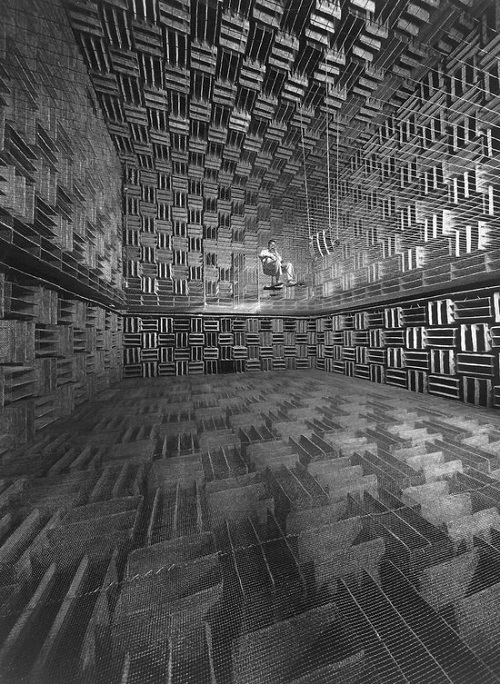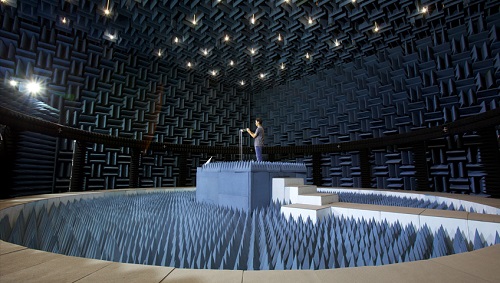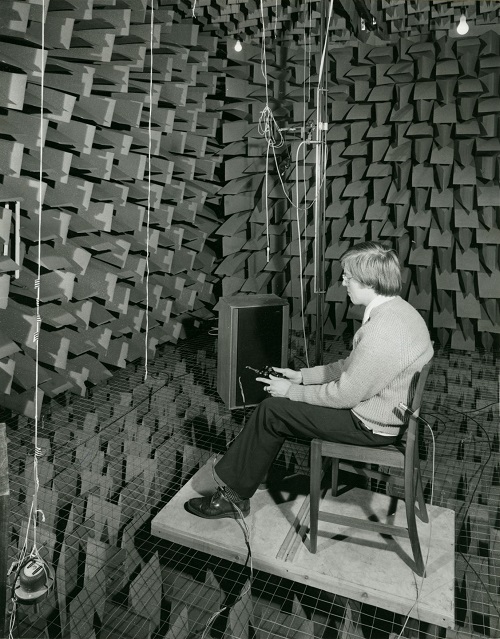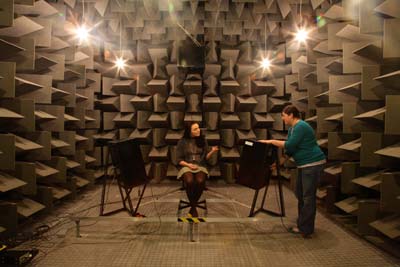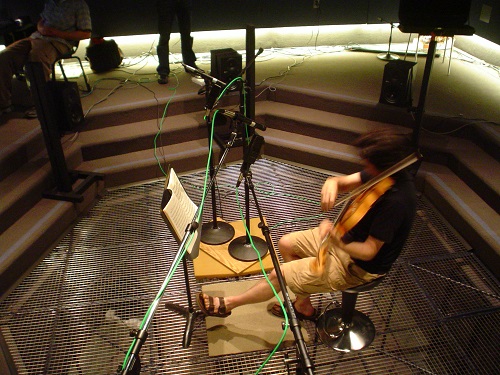Anechoic chamber
An anechoic chamber (an-echoic meaning non-echoing or echo-free) is a room designed to completely absorb reflections of either sound or electromagnetic waves.
They are also insulated from exterior sources of noise. The combination of both aspects means they simulate a quiet open-space of infinite dimension, which is useful when exterior influences would otherwise give false results. Anechoic chambers, a term coined by American acoustics expert Leo Beranek, were originally used in the context of acoustics (sound waves) to minimize the reflections of a room.
Bell Telephone Acoustics Lab, 1947 - Anechoic chamber. Photo courtesy of Retronaut.
More recently, rooms designed to reduce reflection and external noise in radio frequencies have been used to test antennas, radars, or electromagnetic interference.
One, of seventeen, of Apple's anechoic chambers. Photo courtesy of Kyle VanHemert/Gizmodo.
Anechoic chambers range from small compartments the size of household microwave ovens to ones as large as aircraft hangars. The size of the chamber depends on the size of the objects to be tested and the frequency range of the signals used, although scale models can sometimes be used by testing at shorter wavelengths.
Acoustic anechoic chambers
Anechoic chambers are commonly used in acoustics to conduct experiments in nominally "free field" conditions. All sound energy will be traveling away from the source with almost none reflected back. Common anechoic chamber experiments include measuring the transfer function of a loudspeaker or the directivity of noise radiation from industrial machinery. In general, the interior of an anechoic chamber is very quiet, with typical noise levels in the 10–20 dBA range. According to Guinness World Records, 2005, Orfield Laboratory's NIST certified Eckel Industries-designed anechoic chamber is "The quietest place on earth" measured at −9.4 dBA. The human ear can typically detect sounds above 0 dBA, so a human in such a chamber would perceive the surroundings as devoid of sound.
The University of Salford has a number of Anechoic chambers, of which one is unofficially the quietest in the world with a measurement of −12.4 dBA. Foundational text courtesy of Wikipedia.
University of Salford Manchester - Applied acoustics department anechoic chamber, 1979. Photo courtesy of the University of Salford Manchester.
University of Salford Manchester - Applied acoustics department anechoic chamber, recent. Photo courtesy of the University of Salford Manchester.
SoundWIRE Research Group at CCRMA, Stanford University's semi- anechoic room. Photo courtesy of Juan-Pablo Caceres & Chris Chafe.
Anechoic chamber
Do you have content, to add, about the Anechoic chamber or associated topics? Please feel free to Share it, here!
Return from Anechoic chamber to Dictionary of Audio Terminology - A Return from Anechoic chamber to History of Recording - Homepage |
